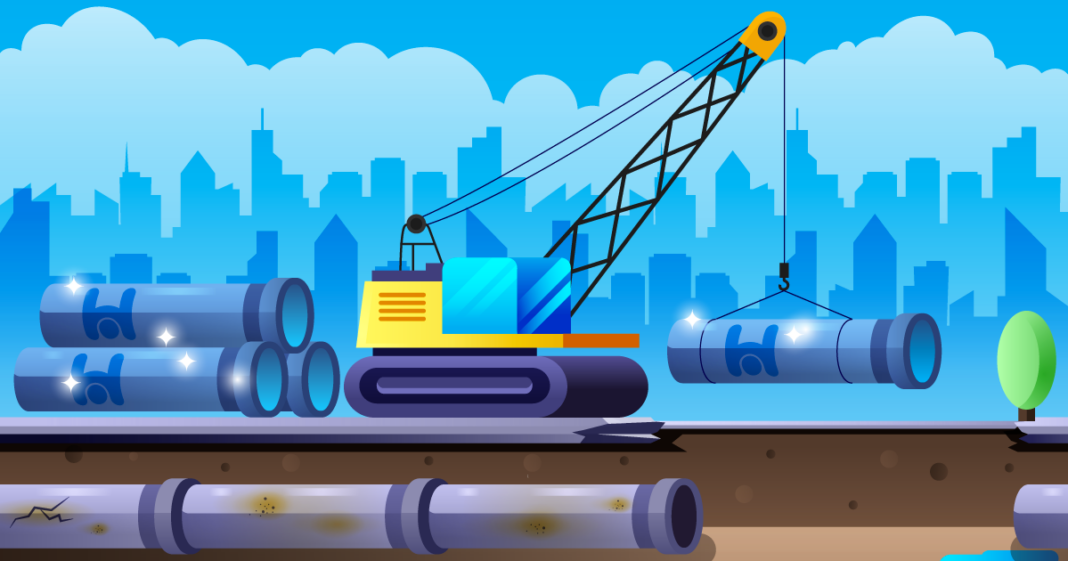Humans have been inventing and evolving infrastructure since the beginning of time. The water pipe is one piece of our infrastructure that has seen several upgrades, from clay, to wood, copper, steel and beyond. Despite these advances, there are water main breaks as often as every two minutes in the United States. Simply put, America’s infrastructure is in need of a true overhaul. Fortunately, the United States government has pledged billions to get this update underway.
In most recent centuries, pipes have been constructed with steel, concrete, iron, and most recently, fiberglass. Although these materials are all modern and reliable, their properties and life expectancies all vary. This makes it very difficult for engineers to maintain them and keep each system running smoothly. For example, the iron pipe has a longevity of 55 years, but the advanced fiberglass pipe can last for over 150 years.
There are several reasons why the water pipe must continue to evolve and improve. The main reasons are to decrease water waste and reinforce failing structures. The United States wastes 6 billion gallons of treated water daily. In addition, the country as a whole is 75 years into an infrastructure that is only designed to last 50 years. By replacing these structures with pipes that have a life expectancy of over 150 years can have several benefits. It cuts maintenance needs drastically, reduces odor emissions, and can prevent catastrophic sinkholes in roads or streets. Overall, making these changes will allow for the saving of precious time and resources that are currently being wasted under the existing systems.
There has been bipartisan support of an infrastructure law that will dedicate billions of dollars to making these changes for the future of America. Sustainability is just over the horizon thanks to these efforts, and the future is bright for the systems that keep America running smoothly.







